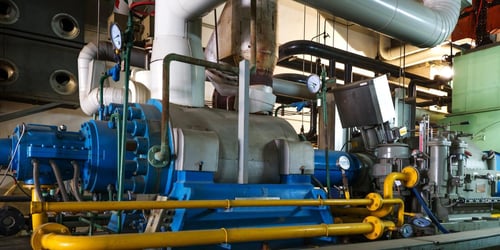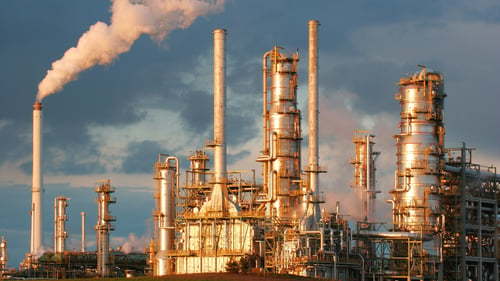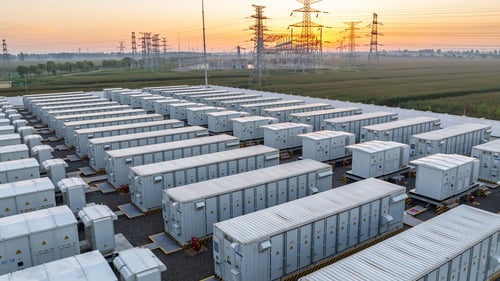The differences in demand response – balancing services explained
.jpg?width=768&name=Article%20Thumbnails%20-%201920x1080%20new%20website%20(26).jpg)
The EU aims to become the world’s first climate-neutral continent by 2050. To do so, it must aim to reduce greenhouse emissions by at least 55% by 2030 as part of its pledge laid out in the European Green Deal. Commercial and industrial businesses will have an opportunity to play their part in helping to achieve these goals.
Unlock New Revenue Streams with Demand Response
Check out our essential guide to energy flexibility.
Jump to:
Companies that choose to participate in demand response (DR) services are able to generate new risk-free revenue streams simply by opting into a voluntary scheme that provides grid-balancing services to the country’s electricity grid.
Demand response services allow independent aggregators, like Sympower, to provide support for participating businesses in order to benefit from financial incentives offered by the Transmission System Operator (TSO). To qualify for this additional revenue, businesses must be prepared to temporarily reduce their electricity consumption by turning down, or turning off non-essential processes during times of peak energy demand.
DR services enable customers to exploit their business’s untapped flexibility within their assets and generate new revenue streams. Aggregators play a crucial part in helping asset and facility managers to access untapped revenue sources without causing disruption to the security or supply of electricity, ensuring customers maintain continuous day-to-day business operations.
Aggregators work closely with TSOs to help compensate for the imbalances in the electricity grid and help stabilise it during times when energy usage either exceeds or falls below forecasted expectations. In other words, electricity input and output need to be constantly balanced to keep the grid stable and prevent serious power outages.

Demand Response programs
Different types of demand response programs are available. Frequency reserves include FCR, aFRR and mFRR, each operating in slightly different ways that allow TSOs to choose the most appropriate service. Essentially, the main difference between them is the time it takes for each service to be activated.
Frequency Containment Reserve (FCR) is a safety mechanism used by several European countries to provide a short-term reactive balancing service that helps ensure the optimum grid frequency of 50 Hz is always maintained. If a deviation of this frequency occurs, caused by a major power plant outage, or a ‘TV pickup’ for example, then FCR is designed to automatically intervene within seconds to help restore safety and security of the grid by balancing supply and demand of electricity. FCR is also referred to as the primary control reserve and is the first response to frequency disturbances. If a deviation persists, then aFRR will replace this primary reserve.
Automatic Frequency Restoration Reserve (aFRR) is a secondary balancing service that helps keep the grid frequency stable and within certain parameters. In most countries this is +/- 0.2 Hz either side of 50 Hz. Balancing Service Providers (BSPs), such as DR aggregators, are responsible for allowing TSOs to activate these services. This reserve service must be provided within minutes of Full Activation Time (FAT) and can be used to gradually replace FCR.
Manual Frequency Restoration Reserve (mFRR) Once a signal is received by the TSO, it can be activated manually or semi-automatically by an aggregator or by customers possessing the required software technology.
mFRR is generally used when longer lasting events – or deviations in the grid frequency, cannot be rectified by other upstream balancing services, such as FCR or aFRR. According to European guidelines, mFRR must be fully deployable after 12.5 minutes with a minimum duration period of 5 minutes.

Flexibility, or balancing service providers, help businesses successfully adapt towards the EU’s energy transition. By combining smart software and hardware, they can provide solutions that offer real-time monitoring and balancing of electricity supply and demand. These services will help businesses with suitable flexibility to generate new revenue streams from, while improving the well-being and health of its citizens and future generations, as set out in the European Green Deal.
Other articles you might find interesting
-
 Demand-side flexibility20 April 2022
Demand-side flexibility20 April 2022District Heating Operators: New Revenue From Grid Balancing
Read more -
 Demand-side flexibility20 April 2022
Demand-side flexibility20 April 2022Five Myths About Demand Response, Debunked!
Read more -
 Demand-side flexibility20 April 2022
Demand-side flexibility20 April 2022BESS & Demand Response, What’s the Connection?
Read more -
.jpg?length=500&name=Article%20Thumbnails%20-%201920x1080%20new%20website%20(4).jpg) Demand-side flexibility20 April 2022
Demand-side flexibility20 April 20223 Things to Look for in a Flexibility Service Provider
Read more -
.jpg?length=500&name=Article%20Thumbnails%20-%201920x1080%20new%20website%20(35).jpg) Demand-side flexibility20 April 2022
Demand-side flexibility20 April 2022smartEn Executive Director Michael Villa on the future of energy flexibility in Europe
Read more -
.jpg?length=500&name=Article%20Thumbnails%20-%201920x1080%20new%20website%20(34).jpg) demand response20 April 2022
demand response20 April 2022Getting Europe’s Grids Fit for the 21st Century - Interview With SmartEn’s Executive Director Michael Villa
Read more -
 Demand-side flexibility20 April 2022
Demand-side flexibility20 April 2022Empowering Industry through Energy Flexibility - Q&A with Raphaël Gras
Read more -
 demand response20 April 2022
demand response20 April 2022EU elections: Opportunity or Risk for Demand-Side Flexibility? - Q&A with Mathilde Chareyron
Read more -
.jpg?length=500&name=Article%20Thumbnails%20-%201920x1080%20new%20website%20(5).jpg) Knowledge20 April 2022
Knowledge20 April 2022How to Earn Revenue with Demand Response
Read more -
.jpg?length=500&name=Article%20Thumbnails%20-%201920x1080%20new%20website%20(6).jpg) Demand-side flexibility20 April 2022
Demand-side flexibility20 April 2022Five Times Demand Response Saved the Grid
Read more